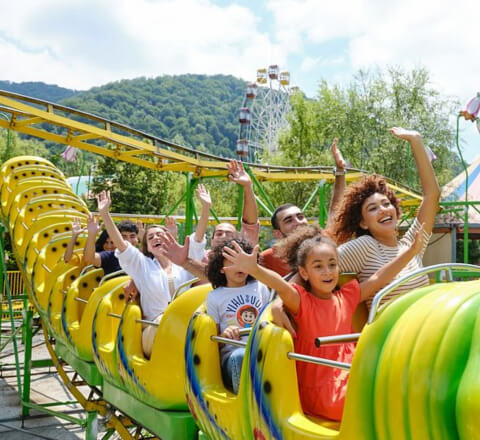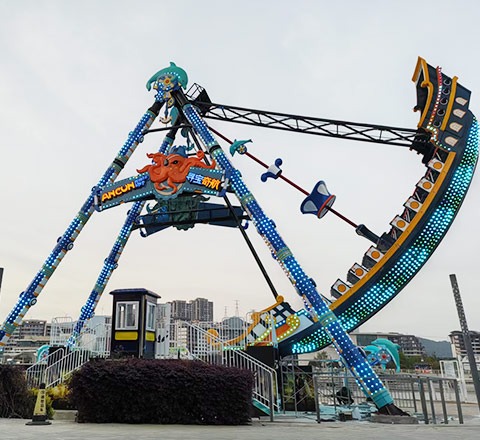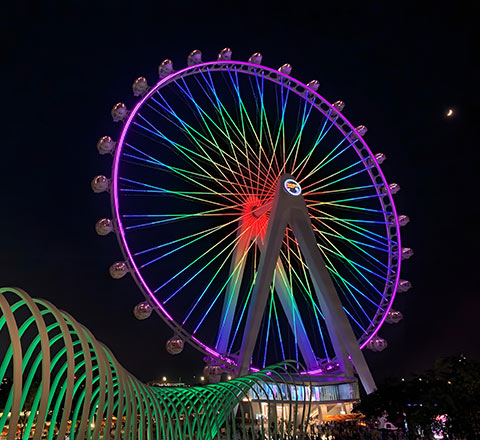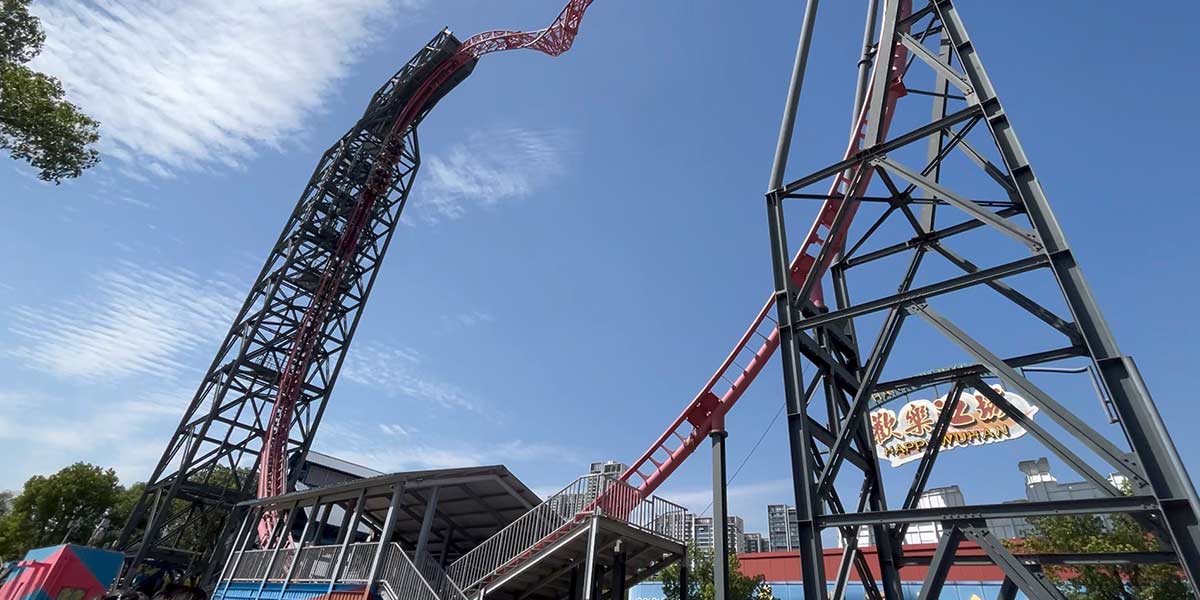
Roller coasters are the most popular attractions in amusement parks, delivering speed, thrills, and unforgettable memories. Yet what most visitors don’t see is the hidden work that makes every ride possible—roller coaster maintenance.
From daily roller coaster maintenance checklists to long-term overhaul schedules, keeping a coaster safe and efficient requires skilled labour, specialised equipment, and continuous investment. This guide covers everything you need to know: safety, costs, jobs, and training.
Why Roller Coaster Maintenance Matters
Maintenance is more than just fixing broken parts. It is the foundation of safety, efficiency, and guest trust. Without it, even the best-designed ride risks:
- Safety failures that put riders in danger
- Unplanned downtime that reduces capacity and revenue
- Higher repair bills from delayed fixes
- Compliance issues with international standards like EN 13814 and ASTM F24
In short, maintenance protects lives, extends ride lifespan, and safeguards the park’s reputation.
Roller Coaster Maintenance Checklist
Maintaining a roller coaster involves multiple systems working in harmony:
Structural Integrity
- Inspect tracks, supports, and foundations for cracks, stress, or corrosion
- Pay extra attention to high-stress areas like sharp curves and drop zones
- Apply protective coatings to prevent weather-related damage
Mechanical Systems
- Daily checks on wheels, brakes, motors, and lift chains
- Lubrication schedules to reduce friction and wear
- Proactive replacement of high-wear parts before they fail
Safety Restraints
- Harnesses, lap bars, and seat belts must lock and release smoothly
- Each restraint is tested before the ride opens to the public
- Redundant systems (e.g., lap bar plus seat belt) add an extra layer of safety
Control Systems
- Routine diagnostics on sensors, alarms, and emergency stops
- Regular software updates for ride control panels
- Backup system testing to ensure fast response in emergencies
👉 Want to understand the technology behind these systems? Read our in-depth guide on How a Roller Coaster Works.

Daily Roller Coaster Maintenance
Before the park opens each day, technicians perform a strict daily inspection routine:
- Walking the entire track to check for debris, cracks, or rust
- Inspecting wheels, brakes, lift systems, and motors
- Testing every lap bar, harness, and seat belt for reliability
- Running diagnostics on sensors and emergency controls
These inspections may seem routine, but they catch issues early and are the backbone of safe roller coaster operations.
Preventive Maintenance: Staying Ahead of Problems
Daily checks are just the beginning. A strong preventive maintenance programme ensures long-term safety and efficiency:
- Lubrication routines for chains, wheels, and bearings
- Scheduled replacement of parts such as wheels, bushings, and chain links
- Non-destructive testing (NDT) to identify hidden cracks in structural components
- Software and control system updates to maintain reliability
Some parks even activate roller coaster maintenance mode, temporarily locking rides out of service for deep servicing and upgrades.
Efficiency Tips for Roller Coaster Operations
Maintenance is not only about safety—it also affects efficiency. A ride that constantly breaks down frustrates guests and reduces park capacity. Practical efficiency measures include:
- Optimising loading and dispatch times to reduce queues
- Monitoring wear patterns with sensors and predictive analytics
- Training staff to identify early warning signs
- Keeping critical spare parts in stock for quick repairs
- Scheduling overhauls during off-peak seasons to avoid guest disruption
Roller Coaster Maintenance Costs: What to Expect
One of the most common questions is: How much does roller coaster maintenance cost?
- The average roller coaster maintenance cost varies widely by size and design.
- Wooden coasters often need frequent retracking and timber replacement.
- Steel coasters require repainting, NDT inspections, and corrosion protection.
- For a major attraction, parks typically spend at least £100,000 per year, with some costs reaching millions of dollars.
Beyond parts, the largest expense is skilled labour. Salaries for roller coaster maintenance workers vary with experience, but their technical expertise is essential to keeping rides safe and operational.

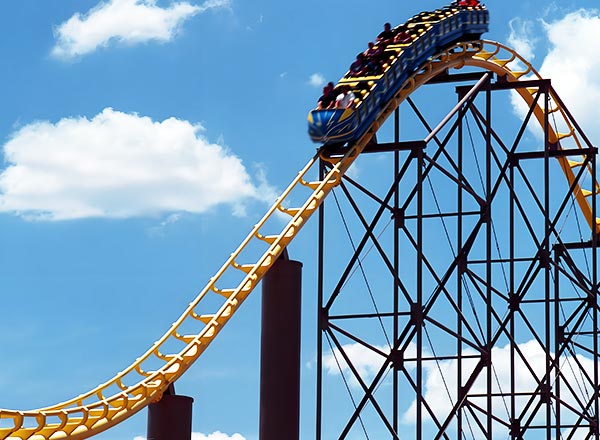
Jobs, Training, and Equipment
Roller coaster maintenance is a highly specialised profession. Teams usually consist of:
- Technicians – perform daily inspections and component replacements
- Engineers – oversee control systems, upgrades, and compliance
- Operators – trained to detect irregularities during ride cycles
Training is vital. Many parks run roller coaster maintenance training programmes covering safety protocols, diagnostics, and emergency drills. Workers also rely on specialised maintenance vehicles and lifting equipment to access tall or complex structures.
For those seeking a career, roller coaster maintenance jobs offer a balance of technical skill and adrenaline—ensuring thrill rides remain safe for millions of visitors.
Common Challenges in Roller Coaster Maintenance
Even with planning, maintenance teams face unique obstacles:
- Corrosion from weather exposure
- Limited maintenance space, especially in compact parks
- Parts delays for older or custom-built rides
- Regulatory inspections that differ by region
Some famous coasters, such as the Hulk or Rock ‘n’ Roller Coaster, require extra attention due to extreme speeds and complex track layouts. Water-based rides like Splash Mountain demand seasonal overhauls because of constant moisture exposure.
The Future of Roller Coaster Maintenance
New technologies are reshaping the field:
- Remote monitoring sensors provide real-time alerts
- Predictive maintenance reduces downtime and long-term costs
- Drone inspections improve access to tall or difficult structures
- Digital record systems streamline audits and regulatory compliance
Forward-looking parks are already adopting these innovations to reduce costs and enhance safety.

How CARNEE Rides Supports Your Maintenance Needs
At CARNEE Rides– a trusted roller coaster manufacturer in China, we design and build roller coasters with serviceability in mind. Our maintenance support includes:
- Manufacturer-approved inspection checklists
- Fast global spare parts distribution
- On-site training for operators and technicians
- Remote diagnostics for control and sensor systems
- Certified inspections and annual overhauls
For parks planning expansion, explore our Roller Coaster for Sale page, where we explain both purchase and long-term maintenance considerations.
FAQs: Roller Coaster Maintenance
How often is preventive maintenance done?
Daily track walks are standard, with monthly and annual inspections depending on local regulations.
What’s the average roller coaster maintenance cost?
At least £100,000 per year for major coasters, sometimes millions depending on design and parts.
Do wooden and steel coasters cost the same to maintain?
No. Wood roller coaster maintenance typically involves frequent retracking and structural upkeep, as the wood naturally wears and shifts over time. Steel coasters, on the other hand, require more emphasis on regular inspections, repainting, and corrosion control. (👉 Learn more about the differences between wooden and steel roller coasters: Wooden Roller Coaster vs. Steel Roller Coaster — Which One Wins?)
What qualifications are needed for roller coaster maintenance jobs?
Technical training in mechanics, electrics, or engineering, along with safety certifications.
Why use a maintenance checklist?
A checklist standardises daily, weekly, and annual tasks, ensuring no critical steps are missed.
Conclusion
Roller coaster maintenance is the backbone of safe, reliable, and profitable park operations.
From daily inspections to long-term overhauls, every step helps protect riders and minimise downtime.
At CARNEE Amusement Rides Manufacturer, we don’t just supply high-quality roller coasters for sale.
We also deliver the expertise, training, and spare parts you need to keep your attractions running safely for decades.
Simply put, when it comes to roller coasters, maintenance isn’t optional—it’s essential.



